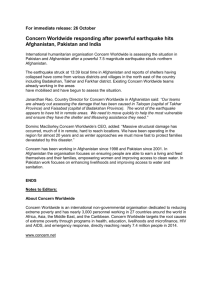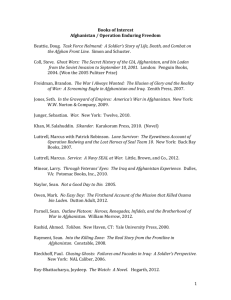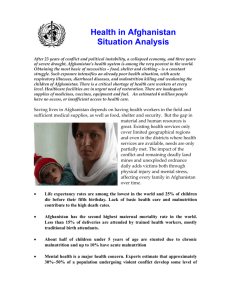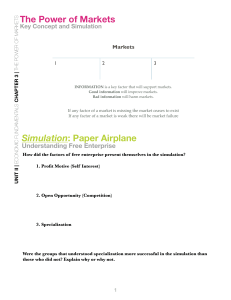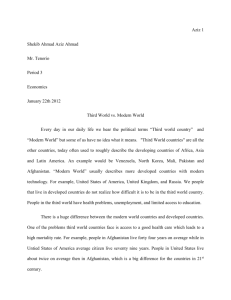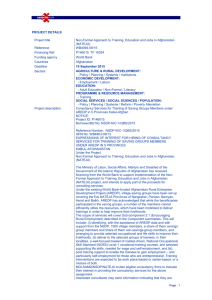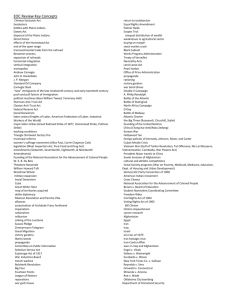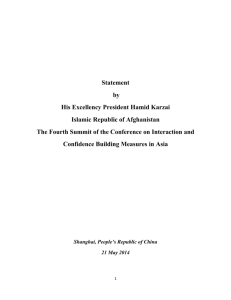Building adaptive capacity and resilience to climate change in
advertisement
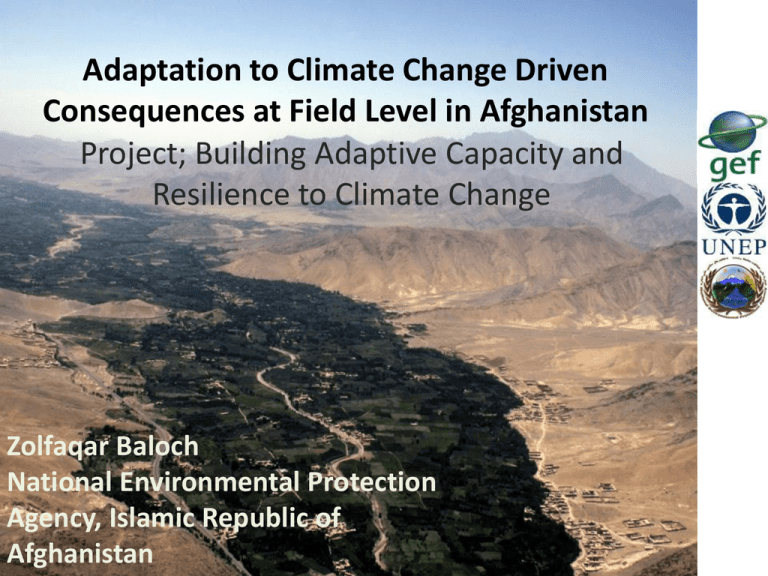
Adaptation to Climate Change Driven Consequences at Field Level in Afghanistan Project; Building Adaptive Capacity and Resilience to Climate Change Zolfaqar Baloch National Environmental Protection Agency, Islamic Republic of Afghanistan Adaptation to Climate Change Driven Consequences at Field Level in Afghanistan Information about Afghanistan • Afghanistan’s population is around 29.8 M • Agriculture: Largest sector contributing 32.5% of GDP and employing 78.6% of labor • GDP growth is volatile due to high dependence on unreliable rain-fed agricultural production • 80% of the land has highly erodible soils, irregular rainfall events and soil erosion as a result of tectonic activity Afghanistan info continued • About 3.3 million ha (5% of land) is irrigated and regularly cropped, while 4.5 million ha (7%) is rain-fed • More than 80% of water resources originate in the Hindu Kush mountains • lowest water storage capacity - Losses 2/3 of its water resources • Poor rain/snowfall hampered cereal production in 2008/09 Climate Change Impacts on Afghanistan • An increase in both the rate of incidence and the duration of drought periods - (Ref: NAPA & NCSA Report) • An increase in the mean annual temperature by 0.6°C since 1960 – (Ref: NAPA & NCSA Report) • Increase in the frequency of hot days and nights by 25 days per year – (Ref: NAPA & NCSA Report) • A moderate reduction in rainfall (0.5 mm/month) at a national scale – (Ref: INC) • Seasonal variation has caused extreme snowfall, floods and droughts - (DFID, 2009). Project Sites Field Adaptation Challenges 1. 2. 3. CC has severe impacts on water sector Rural communities presently lack the CC knowledge, Technical capacity, management capacity and physical and financial resources overcome and withstand the impacts of climate change needs the following Baseline Assessment • Provincial and Community level understanding on CCA is very low • Traditional agriculture and irrigation practices are applied • Water management at water shed level is quite low • community conservation and restoration plans does not exist Site Selection • • • • • • • Poverty, Community agricultural dependence, Water shortage, Population pressure, Incidence of drought and climate hazards, Public awareness and education, and Human health. MOU/Agreement • Identification of Social Organizations • Developing Project Agreements • Signing Agreements with government and community involvement • Implementation of Activities and Change Management as the project progresses to learn from progress • Closure and wrap up Field Activities • construction of suitable water structures e.g. stone bunds, soil berms and gabions Field Activities • Micro-catchment techniques e.g. catchment ponds, contour bunds and strip-crop Field Activities Community conservation and restoration plans Field Activities Ecological restoration Field Activities • Planting multiple-benefit plant species Pistachio Afghan ash Salt tree Black poplar White poplar Bombay Black wood Salt tree Persian turpentine tree Russian olive Desert teak Forest oak False acacia Field Activities Terracing Field Activities Affordable Micro Irrigation Technologies (AMIT) Images courtesy of ICARDA Additional Activities Identified during Assessment Additional Activities Identified during Assessment Continued Thanks


